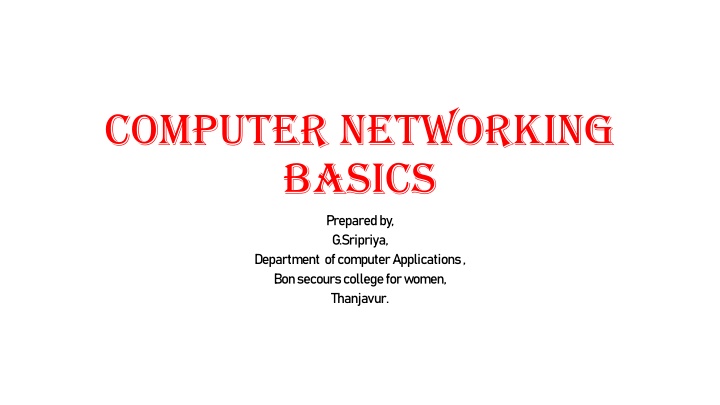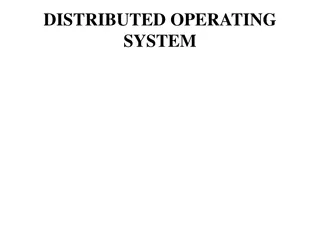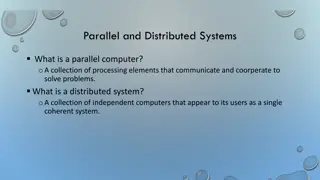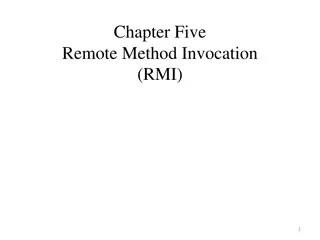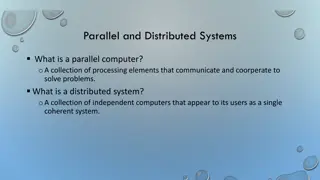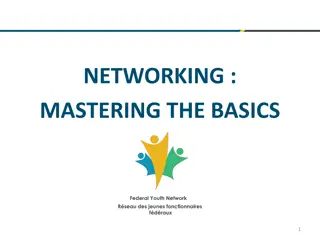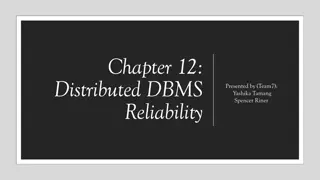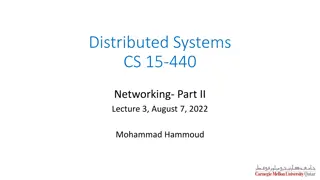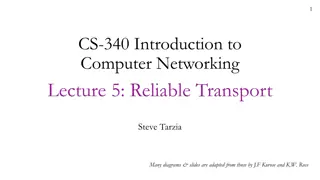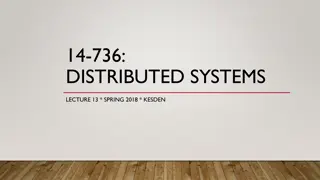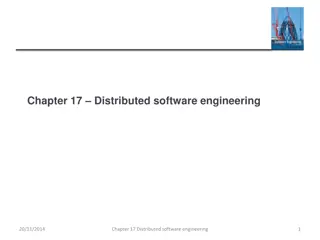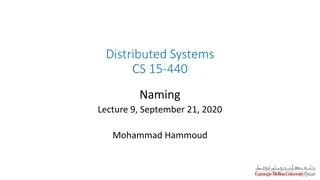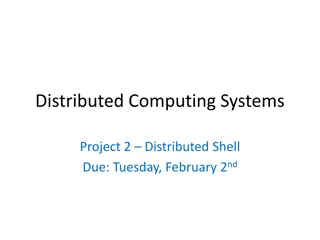Computer Networking Basics and Distributed Systems
Computer networks facilitate the sharing of devices and resources like servers, clients, and data, while distributed systems involve components located on different networked computers communicating to achieve common goals. Types of computer networks include LAN, PAN, MAN, and WAN. Distributed systems allow resource sharing among connected systems, enabling applications like Intranets, Internet, and email. The Internet is a global network connecting computers worldwide through high-bandwidth data lines.
Download Presentation

Please find below an Image/Link to download the presentation.
The content on the website is provided AS IS for your information and personal use only. It may not be sold, licensed, or shared on other websites without obtaining consent from the author.If you encounter any issues during the download, it is possible that the publisher has removed the file from their server.
You are allowed to download the files provided on this website for personal or commercial use, subject to the condition that they are used lawfully. All files are the property of their respective owners.
The content on the website is provided AS IS for your information and personal use only. It may not be sold, licensed, or shared on other websites without obtaining consent from the author.
E N D
Presentation Transcript
Computer networking Basics Prepared by, G.Sripriya, Department of computer Applications , Bon secourscollege for women, Thanjavur.
What is computer Networks: Computer networks share common devices, functions, and features including servers, clients, transmission media, shared data, shared printers and other hardware and software resources, network interface card(NIC), local operating system(LOS), and the network operating system (NOS).
A computer network is mainly of four types: A computer network is mainly of four types: LAN(Local Area Network) PAN(Personal Area Network) MAN(Metropolitan Area Network) WAN(Wide Area Network)
distributed system: distributed system: A distributed system is a system whose components are located on different networked computers, which communicate and coordinate their actions by passing messages to one another. The components interact with one another in order to achieve a common goal.
A distributed system allows resource sharing, including software by systems connected to the network. Examples of distributed systems / applications of distributed computing : Intranets, Internet, WWW, email. Telecommunication networks: Telephone networks and Cellular networks. Types of distributed systems, Client-server Clients contact the server for data, then format it and display it to the end-user. ... Three-tier Information about the client is stored in a middle tier rather than on the client to simplify application deployment.
Internet The Internet is a global wide area network that connects computer systems across the world. It includes several high-bandwidth data lines that comprise the Internet "backbone" These lines are connected to major Internet hubs that distribute data to other locations, such as web servers and ISPs In order to connect to the Internet, you must have access to an Internet service provider (ISP), which acts the middleman between you and the Internet. Most ISPs offer broadband Internet access via a cable, DSL, or fiber connection. When you connect to the Internet using a public Wi-Fi signal, the Wi-Fi router is still connected to an ISP that provides Internet access. Even cellular data towers must connect to an Internet service provider to provide connected devices with access to the Internet. The Internet provides different online services. Some examples include: Web a collection of billions of webpages that you can view with a web browser Email the most common method of sending and receiving messages online Social media websites and apps that allow people to share comments, photos, and videos Online gaming games that allow people to play with and against each other over the Internet Software updates operating system and application updates can typically downloaded from the Internet
Intranet: An intranet is a computer network for sharing information, collaboration tools, operational systems, and other computing services within an organization, usually to the exclusion of access by outsiders. Examples of intranet services include Microsoft SharePoint, Huddle, Igloo, and Jostle. While some services are open source and free of charge, most intranet solutions require a monthly fee. The cost is usually related to the number of users within the intranet.
Types of Protocols network protocol of A established determine how data is transmitted between different devices in the same network. Essentially, it allows connected devices to communicate with each other, regardless of any differences in processes, structure or design. Types: Transmission Control (TCP) is an Internet Protocol (IP) User Datagram Protocol (UDP) Post office Protocol (POP) Simple mail (SMTP) File Transfer Protocol (FTP) Hyper Text (HTTP) Hyper Text Transfer Protocol Secure (HTTPS set rules that transport Protocol their internal Transfer Protocol Protocol
The communication system is a system which describes the information exchange between transmission and reception of information is called communication. The major elements of communication are the Transmitter of information, Channel or medium of communication and the Receiver of information. two points. The process of In telecommunication, a communications system or communication system is a collection of individual communications networks, transmission systems, relay stations, tributary stations, and data terminal equipment usually capable interoperation to form an integrated whole. of interconnection and
E-commerce (electronic commerce) is the buying and selling of goods and services, or the transmitting of funds or data, over an electronic network, These business transactions business (B2B), business-to-consumer (B2C), consumer-to-consumer or consumer-to-business. E-Commerce or Electronic Commerce means buying and selling of goods, products, or services over the internet. E-commerce is also known as electronic commerce or internet commerce. ... Online stores like Amazon, Flipkart, Shopify, are examples of E-commerce websites. primarily occur the as internet. business-to- either Myntra, Ebay, Quikr, Olx
